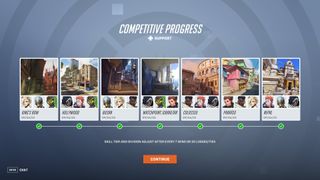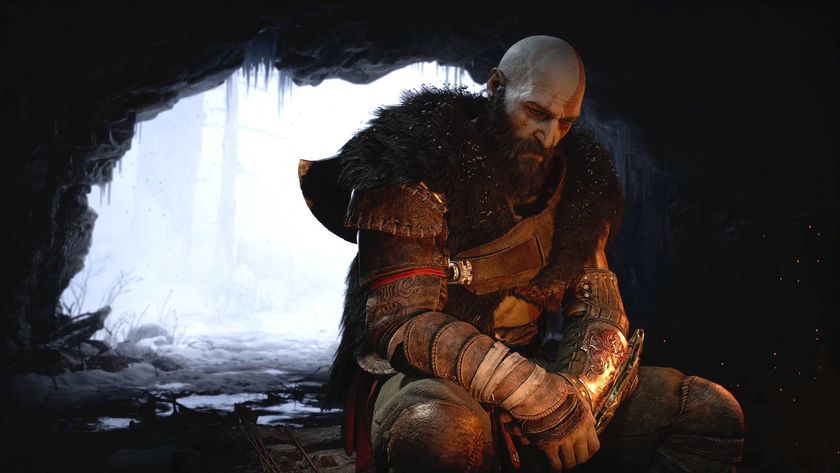How Overwatch 2 Competitive works and how to climb or rank up
Raise your level with the new Overwatch 2 ranked mode

Overwatch 2 Competitive has seen a bit of a rework in its transition to a new game. How you rank up, and when you’re updated is different so it’s understandable if you are feeling a little lost. In Overwatch 2, Competitive (or ranked if you prefer), is one of the main incentives to continue grinding the game. While rewards from the Overwatch 2 battle pass will carry a lot of the experience, improving your rank and skill is where the competitive itch is scratched.
In Overwatch 1, your rank was always displayed, with a number going up when you won, and importantly, down when you lost. Having that value plummet after a heavy loss streak was fairly frustrating, so Blizzard has taken another look at how it ranks your skill, deemphasizing the impact of a couple of Overwatch 2 losses, or at least hiding the damage from you.
It’s a neat system, but it is initially confusing. That’s why we’re here to help you get your head around how it all works, how you get your rank, and how you climb, especially as most of that is initially hidden from you. Here’s everything you need to know about Overwatch 2’s Competitive, and how you can go about flying up the ranks.
What is Competitive 2.0?

Competitive 2.0 is Overwatch 2’s ‘serious’ mode. When you queue into a Competitive match, you’re generally there for two things: to get better and to win. It’s all underpinned by a value, representing how good you are at the game. 2.0 specifically is an overhaul of how you’re presented your rank, but also how you rise up the leaderboards too with Blizzard trying to make the mode less frustrating overall.
In Overwatch 1, your worth in Competitive was tied entirely to your Skill Rating (or SR), and it was a number that went up or down with every win or loss. Blizzard decided to remove this system, in a blog post explaining: “Seeing your SR go up and down after each match almost felt like taking a test with the teacher passing or failing you based on each individual question rather than your complete work.”
“Looking at the past seven or 20 games as a collective helps you better understand how you're performing in Competitive rather than putting a ton of pressure on each individual game. We want you to feel like you’re improving and being rewarded for advancing from the first day you start playing Competitive in Overwatch 2.”
As in Overwatch 1, there are four potential Competitive ranks you can have in Overwatch 2. There’s Role Queue, where your Tank, Damage, and Support roles all have independent ranks depending on how well you play each (and check out out Overwatch 2 Hero changes to see what's new there). However, you can also have an Open Queue rank too, which removes the lock on the number of characters you can have in one role. If you want to roll out with four tanks and a healer, you can.
How does Competitive 2.0 work?


Find the perfect hero for you with all the Overwatch 2 characters and roles you can play, There's been some adjustments so see what's changed.
Okay, so if you don’t have a number that goes up after every match, how does it work? Well, you’re now updated on your placement after reaching a win or loss threshold, and your rank won’t move until you reach one threshold or another.
In order to initially place, you either need to hit seven wins or twenty losses. Once you do that, the game will place you where it thinks you belong. Then, your wins and losses reset, and you’ll be updated on your rank every seven wins or twenty losses from there on.
With SR now gone, you’ll now be placed in a vaguer tier system. All of the main skill tiers return from Overwatch 1, as listed below, with Bronze being the lowest and Grand Master being the highest:
However, what’s new in Overwatch 2 are divisions within these skill tiers. Now there are five sub-tiers in each tier. These are represented by numbers, with 5 being the lowest and 1 being the highest. For example, you could place Gold 5, and you’d have to ascend past Gold 1 in order to enter Platinum.
If you’re still tied to the idea of SR, you can do a little math to work it out, as Blizzard has confirmed divisions loosely translate to around 100 SR each. So if you used the old standard where Gold was 2000 SR, a player in Gold 4 would be around 2300.
What to do if you've placed low compared to your rank in Overwatch 1

If you’ve been placed very low in Overwatch 2 compared to where you were in Overwatch 1, don’t worry, it’s intentional. If you were a Diamond player who now finds themselves in Silver, don’t get too discouraged - everyone is being placed like this.
As part of Competitive 2.0, Blizzard has hit a soft reset on everyone’s account. While your previous history is still a factor, have your expectations low as Blizzard is intentionally placing everyone below where they were in Overwatch 1. As an anecdote, I was personally a low Platinum player and I placed in Silver 4.
However, once you get your seven wins to get placed again, you should start to see fairly rapid progress, especially with your first few placements. It’s common for the game to place you several ranks above where you were in your first handful of rankings as it adjusts to where you accurately sit in the community of players. So be patient, grind through the wins, and you should be able to rise relatively quickly.
Overwatch Competitive 2.0 quick tips
Competitive can be grueling at times, and it can get the better of you. If you hit a losing streak or can’t seem to rank up higher, it can be fairly frustrating. To stay on top of that, here are some tips to stop yourself from throwing away potential wins.
- Don’t go in cold - you wouldn’t go into a soccer match without warming up first. Gaming works in a similar way. If you really intend to win, make sure you do some playing beforehand, be it in quickplay, mystery heroes, or going into the practice range and getting your aim going.
- If you’re losing, take a break - this can be a tough one to abide by in the moment, but it’s a great rule to stick to. Sometimes you just get a bad string of matches. Don’t chase the win, as you’ll only get more frustrated and be more likely to lose. Agreeing with yourself and friends that you’ll stop playing Competitive after three losses in a row is a great rule to stop you from nose-diving on a bad night.
- If you think you should be higher, prove it - just about everyone in Competitive would like to think they should be higher than where they are. There’s a myriad of excuses we tell ourselves as to why we might be hard-stuck in our rank. However, the only way to prove that is by climbing. Accepting your rank puts you in a much healthier mindset to improve
- Your team isn’t the problem - while it can be tempting to blame your teammates rather than look at your own play, it’s a defeating mindset. While bad teammates do certainly happen, you’re the only constant in your games. Focusing on what you can do better rather than blaming your team and learning nothing is always going to be better.
- VOD review yourself - if you’re serious about improving, consider reviewing your play. Overwatch 2 is a very fast game and it asks you to make a lot of decisions very quickly and it can be hard to parse why a situation went wrong in the moment. Use the in-game replay viewer to watch your play and ask yourself these questions during your fights: What could I have done differently? Who should I have focused on? Why did I die? This truly is one of the best ways to improve, as you need to know your weaknesses before you can become a better player.
Sign up to the 12DOVE Newsletter
Weekly digests, tales from the communities you love, and more
Patrick Dane is currently the Guides Editor at TechRadar. However, he was formerly a freelance games journalist writing for sites and publications such as GamesRadar, Metro, IGN, Eurogamer, PC Gamer, and the International Business Times, among others. He was also once the Managing Editor for Bleeding Cool.

Elden Ring Nightreign beta invites are apparently so in demand, scalpers are already trying to resell them for hundreds of dollars

Arrowhead CEO addresses Helldivers 2 Killzone crossover prices, admits this didn't hit "the sweet spot" and says "we will persevere and improve things in due course"

